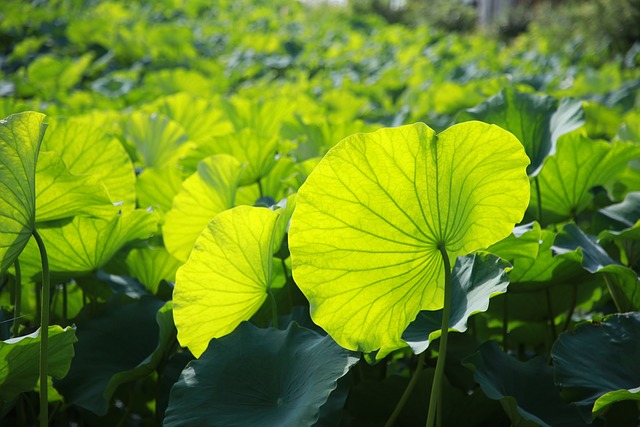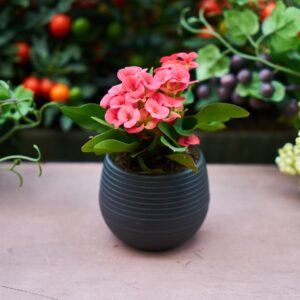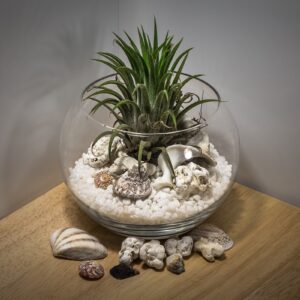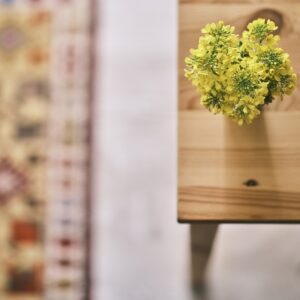Creating a meditation space in your home can be like carving out a little oasis of calm amidst the hustle and bustle of daily life. Just as a garden needs plants to thrive, your meditation space can benefit from the addition of houseplants to help create a serene and peaceful atmosphere. Think of it like adding the finishing touches to a painting, the houseplants can add depth and texture to your meditation space, helping to create a more serene environment. Houseplants can do more than just add visual interest to your meditation space. They have been shown to have a range of benefits from purifying the air to reducing stress levels. In fact, studies have shown that simply being around plants can have a calming effect on the body and mind. So, whether you’re a seasoned meditator or just starting out, incorporating houseplants into your meditation space can be a simple and effective way to enhance your practice. In this article, we’ll explore some of the best houseplant ideas for meditation spaces, as well as tips for placement and care.
Benefits of Houseplants for Meditation Spaces
You’ll love how adding some greenery to your meditation area can enhance your practice and bring a sense of calmness to your surroundings. Indoor gardening is a great way to create a peaceful, zen-like atmosphere in your space.
Houseplants not only provide a natural touch but also help improve air quality, reduce stress levels, and boost your mood. To make the most of your indoor garden, consider investing in some houseplant accessories.
Plant stands, pots and plant hangers can help elevate your greenery and create a visually appealing display. You can also incorporate elements like rocks, crystals, or scented candles to add to the overall ambience.
With the right combination of plants and accessories, your meditation space can become a relaxing sanctuary that promotes mindfulness and inner peace.
Low-Maintenance Houseplants for Beginners
If you’re looking to add some greenery to your relaxation oasis, these easy-to-care-for plants are perfect for beginners. Indoor gardening has never been this easy with our budget-friendly options. You don’t need to break the bank to create a zen corner in your home.
One of the easiest houseplants to care for is the snake plant. It’s perfect for beginners because it can handle low light and requires minimal watering.
Another great option is the pothos plant, which can thrive in a variety of light conditions and can even survive if you forget to water it for a few days.
With these low-maintenance houseplants, you can enjoy the benefits of indoor gardening without the added stress of caring for high-maintenance plants.
Air-Purifying Houseplants for Clean Air
Breathe in cleaner air and feel refreshed with these air-purifying houseplants that require minimal effort to maintain. Indoor gardening can be a relaxing activity that not only enhances your home’s decor but also improves your indoor air quality.

With these air-purifying houseplants, you can create a peaceful and refreshing atmosphere in your meditation space. Spider plants, snake plants, and peace lilies are known for their ability to remove toxins from the air, making them a popular choice for indoor gardening enthusiasts.
These plants are not only easy to care for but also add a touch of greenery to your meditation space. To keep them healthy, make sure to place them in a spot with indirect sunlight and water them once a week.
With these plant care tips, your air-purifying houseplants will thrive, and you’ll feel rejuvenated every time you meditate in your zen corner.
Feng Shui and Houseplant Placement
Did you know that proper placement of houseplants according to feng shui principles can increase productivity by up to 15% in the workplace?
The same principles can also be applied to your meditation space to create a peaceful atmosphere. Harmonizing colors and balancing energy are key feng shui tips for houseplant placement.
When choosing plants for your meditation space, consider their energy and symbolism. For example, the peace lily is known for its ability to purify the air and promote tranquillity. The snake plant is another popular choice as it’s believed to absorb negative energy and promote positive chi.
In terms of color, green is a calming and balancing color, while purple is associated with spirituality and creativity. By strategically placing plants with these colors and energies, you can enhance the overall energy of your space and create a more conducive environment for meditation and relaxation.
Incorporating Houseplants into Your Meditation Practice
Incorporating greenery into your mindful routine can add a refreshing touch of nature, enhancing the peaceful ambiance of your meditation experience. But it’s not just about placing a plant in your meditation space and calling it a day.
Mindful watering and plant care rituals can also become a part of your meditation practice. As you water your plants, take the time to focus on the present moment and the act of nurturing a living being. Observe the leaves, the soil, and the roots, and appreciate the beauty of the natural world.
This simple task can become a meditative practice that helps you cultivate mindfulness and appreciation for the world around you. Additionally, plant care rituals, such as pruning, repotting, and fertilizing, can be another opportunity to connect with nature and practice mindfulness.
Frequently Asked Questions
How often should I water my houseplants in my meditation space?
Imagine your houseplants are like a group of friends, each with their own unique personalities and needs. Just as you wouldn’t expect your introverted friend to enjoy a rowdy party every night, you can’t treat all your plants the same when it comes to watering frequency.
To maintain healthy houseplants in your meditation space, it’s important to pay attention to soil moisture. Stick your finger about an inch deep into the soil – if it feels dry, it’s time to water. However, if it feels moist, hold off for a little longer. Overwatering can lead to root rot and other issues, so it’s better to err on the side of caution.
As a general rule, most houseplants prefer to dry out a bit between waterings. By tuning into your plants’ individual needs and following these tips, you can create a thriving oasis of green in your Zen corner.
Can I use artificial plants instead of real ones in my meditation space?
If you’re considering using artificial plants in your meditation space, it’s important to weigh the benefits of real plants versus artificial ones. While real plants provide a sense of natural beauty and can help purify the air, they also require maintenance and care.
Artificial plants, on the other hand, require no maintenance and can be a good option for those who don’t have a green thumb or who are worried about allergies. When incorporating artificial plants into your meditation space, it’s important to choose high-quality ones that look and feel realistic.
You can also mix and match real and artificial plants to create a balance that works for you. Ultimately, the choice between real and artificial plants depends on your personal preferences and needs.
What are some houseplants that are toxic to pets and should be avoided in a meditation space?
When creating a meditation space, it’s important to consider the safety of any pets that may be around. Some houseplants can be toxic to animals, so it’s important to choose pet-friendly alternatives.
Signs of plant toxicity in pets can include vomiting, diarrhoea, lethargy, and even seizures. Some common houseplants that should be avoided in a meditation space where pets are present include lilies, peace lilies, snake plants, and pothos.
Instead, consider pet-friendly options such as spider plants, Boston ferns, and bamboo palms. These plants not only add to the peaceful ambiance of a meditation space but also provide a safe environment for both you and your furry friends.
Can I use candles or incense in conjunction with my houseplants in my meditation space?
When it comes to creating a serene meditation space, combining meditation practices with aromatherapy can be a powerful tool for relaxation and focus. Using candles and incense for meditation can enhance the overall experience by promoting calmness, reducing stress, and creating a soothing atmosphere.
Whether you prefer the subtle fragrance of lavender or the invigorating scent of peppermint, there are plenty of options to choose from. However, it’s important to be aware of any allergies or sensitivities you may have before incorporating these elements into your meditation space.
With the right combination of houseplants, candles, and incense, you can create a Zen corner that promotes mindfulness and inner peace.
Are there any specific colors or types of pots that are recommended for houseplants in a meditation space?
When it comes to choosing pots for your houseplants in a meditation space, there are a few things to consider.
First, think about the colors of the pots and how they might affect your mood. According to color psychology, blue and green are calming and soothing colors, while red and orange are energizing. So, if you’re looking to create a peaceful atmosphere in your meditation space, opt for pots in shades of blue or green.
Additionally, consider the principles of Feng Shui when choosing pots. In Feng Shui, round or oval shapes are preferred over sharp angles, as they create a more harmonious energy flow. So, look for pots with rounded edges or even ones that are shaped like a perfect circle.
By selecting pots that align with these principles, you can enhance the calming and relaxing environment of your meditation space.
Conclusion
Congratulations! You’ve now learned about the benefits of incorporating houseplants into your meditation space. Not only do they improve air quality and add a touch of nature, but they also promote a sense of calm and tranquillity.
As you continue to explore different houseplants for your Zen corner, remember to consider their low-maintenance requirements and their placement according to Feng Shui principles. And don’t forget to integrate these houseplants into your meditation practice, using them as focal points to help you stay present and centered.
In conclusion, creating a Zen corner with the help of houseplants is a wonderful way to enhance your meditation practice and promote a sense of well-being in your daily life. So go ahead and start experimenting with different types of houseplants to create the perfect meditation oasis that will help you find your inner peace.
Remember, nature is always there to help you find your balance and bring you closer to your true self.





